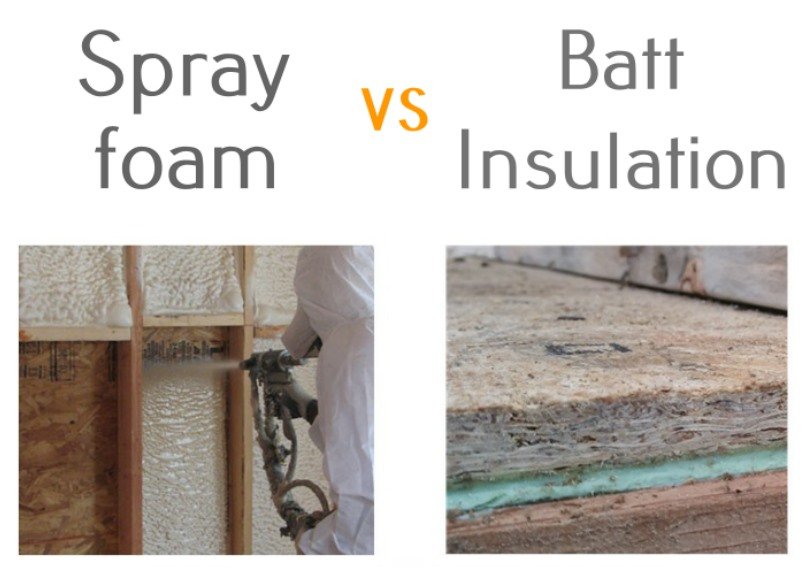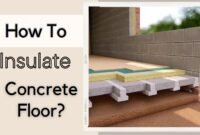When considering spray foam or batt insulation for home insulation, which type is most suitable for your walls? Well, it may be difficult to choose. You can, however, draw comparisons between the two.
Two popular options are spray foam and batt insulation, each with its own set of advantages and disadvantages. Here’s a detailed comparison to help you make an informed decision.
Spray Foam vs Batt Insulation Pros and Cons
Generally, spray foam has a few types. So does the batt insulation. Knowing those facts, the comparison below will not cover all those types. Yet, in rather few instances, Types of spray foam include open-cell foam and closed-cell spray foam, each with unique properties. For batt insulation, an example is sheep’s wool.

- The Advantages and Disadvantages of Open-Cell Spray Foam
Open-cell spray foam insulation can expand after spraying to cover gaps, fissures, and crevices, making it an ideal choice for installing spray foam insulation in irregular spaces. Unfortunately, the low-density one has an R-value which begins at 3.6 per inch, which may not be sufficient for colder climates.
Read also: Soundproofing Spray Foam For Existing Walls
- The Advantages and Disadvantages of Closed-Cell Spray Foam
Closed-cell spray foam, one of the types of closed-cell spray foam, is useful for opening spaces and will never settle. When it dries and sets, it forms an unbreakable, air-tight seal, effectively reducing energy costs.
Furthermore, This spray, especially closed-cell spray foam, is moisture-resistant. Its impermeability to water helps inhibit the growth of mold, mildew, and bacteria.
On the downside, it does not always fill the slightest gaps. This spray foam may cause water problems for homes in some cases because empty spaces might leak.
- What Are The Advantages And Disadvantages Of Sheep’s Wool Batt Insulation?
Wool may survive for years and can be recycled when it is no longer useful.
Wool batts require a part of the energy needed to produce fiberglass batts.
It is permeable and can capture and expel water continuously. It may collect up to 30% of its volume in humidity before losing its thermal characteristics.
The fact that it has a poor R-value is its biggest downside. Wool is also susceptible to insects, particularly moths. Furthermore, while wool insulation batts are costlier, fiberglass insulation containing glass fibers is a more budget-friendly option.
Spray Foam VS Batt Insulation Summary
Comparison Table
| Feature | Spray Foam Insulation | Batt Insulation |
|---|---|---|
| R-Value | High (up to 6.5 per inch) | Moderate (up to 4.3 per inch) |
| Air Sealing | Excellent | Poor |
| Moisture Barrier | Closed-cell type is effective | Not effective |
| Installation | Requires professional installation | DIY-friendly |
| Cost | Higher | Lower |
| Longevity | Does not sag or settle | Can sag or settle over time |
| Environmental Impact | Potential for VOC emissions | Lower emissions |
Spray foam
Below, you can look at some pros and cons of spray foam.
- Pros
- The most excellent density of any insulating material was produced. A separate vapor barrier is not required with closed-cell foam.
- High R-Value: Spray foam insulation offers a high R-value per inch, providing excellent thermal resistance.
- Air Sealing: It acts as an effective air barrier, reducing air leakage and improving energy efficiency.
- Moisture Barrier: Closed-cell spray foam also serves as a moisture barrier, protecting against mold and mildew.
- Longevity: It has a long lifespan and doesn’t sag or settle over time.
- Cons
- Spray foam installation, particularly when not done by a professional, can emit hazardous gases. It’s often recommended to hire a professional for spray foam installation.
- Leaks quickly through unprotected joints and holes, causing havoc.
- A specialist subcontractor with specific training, gear, and expertise is required.
- It is far more costly than other types of insulation.
- Potential for Off-Gassing: Some spray foam products may emit volatile organic compounds (VOCs) during installation and curing.
From My Experience: Having worked in the insulation industry for many years, I’ve seen firsthand how spray foam can significantly improve a building’s energy efficiency.
In one residential project, we used closed-cell spray foam in the attic, and the homeowners noticed a substantial decrease in their energy bills and improved indoor comfort within the first month.
Batt Insulation
Well, you can look at some pros and cons of batt insulation below.
- Pros
- Cheap and simple to install
- The optional face serves as a vapor barrier.
- DIY-Friendly: It’s easier to install, making it a good option for DIY projects.
- Availability: Widely available in various sizes and R-values.
- Cons
- It may irritate the skin, eyes, and lungs, leading to pulmonary problems.
- Poor installation practices might degrade performance.
- Temperature distribution through structural parts is hard to prevent.
- Air Leakage: Batt insulation doesn’t provide an air seal, which can lead to drafts and reduced energy efficiency.
- Moisture Issues: It can absorb moisture, potentially leading to mold growth if not properly installed.
From My Projects: I’ve installed batt insulation in numerous renovation projects. One memorable instance was a historic home where we needed to maintain the original structure. Batt insulation was the perfect choice due to its flexibility and ease of installation.
However, we had to ensure a meticulous vapor barrier to prevent moisture issues, highlighting the importance of proper installation techniques.
Soundproofing Performance
Is spray foam insulation worth it? Or is batt insulation worth it? Especially for soundproofing? Due to the materials, spray foam and batt insulation can compete.
Ultimately, the best solution is to utilize batts and, if feasible, seal them with an open-cell spray foam barrier. A dual component is the same as “flash and batt.” The STC of rigid fiberglass batts is approximately 44, equivalent to sound-absorbing fibrous material and superior to any insulating foam.
When rigid batt insulation is unavailable, foam is usually more effective at soundproofing than other types of fiberglass insulation. But still, batt insulation can absorb audio more uniformly, so although the STC rating appears lower, they are a better choice for soundproofing.
Another aspect to consider is using loose-fill insulation, an alternative to batts. Loose fill, often made of fiberglass or cellulose, can be easier to install in irregular spaces.
Furthermore, when comparing spray foam and fiberglass, it’s important to consider the specific needs of your space. Open-cell foam is more breathable, while closed-cell foam offers better moisture resistance, making it ideal for areas prone to dampness.
Read also: How to Get Spray Foam Off Hands Quickly?
Cost and Energy Efficiency: Benefits of Spray Foam Insulation
When comparing foam insulation vs fiberglass, it’s important to consider the cost of spray foam and its potential to reduce energy expenses. While the initial spray foam insulation costs may be higher than fiberglass, its superior air-sealing capabilities can lead to significant energy savings over time.
Additionally, installing spray foam insulation requires specialized equipment and expertise, often necessitating hiring professional installers.
Conclusion
In conclusion, the choice between spray foam and batt insulation involves weighing factors such as the cost of spray foam, its energy-saving potential, and the specific needs of your space. Whether you opt for open-cell spray foam insulation or fiberglass batts, the goal is to achieve an energy-efficient and well-insulated home.
So, those are some explanations about spray foam vs batt insulation. Make sure to conduct a consultation with a professional before doing either one of them.

